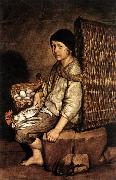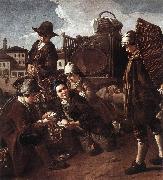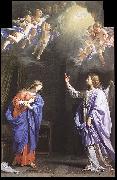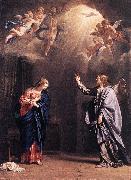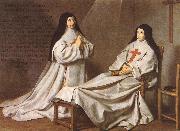CERUTI, Giacomo Huiler la Reproduction de TableauAll CERUTI, Giacomo Oil PaintingsItalian Painter, 1698-1767 |
|||

|
|||
|
|
|||
|
||||||||||||
| CERUTI, Giacomo Italian Painter, 1698-1767 |
||||||||||||
|
|
||||||||||||
| ID de tableau:: 5988 Le garçon avec un Panier Boy with a Basket c. 1745 Huiler sur le canevas, 130 x 95 cm La Galerie d-Art de Brera, Milan c. 1745 Oil on canvas, 130 x 95 cm Pinacoteca di Brera, Milan |
||||||||||||
|
|
||||||||||||
| ID de tableau:: 5989 Le soir au Piazza jj Evening at the Piazza jj c. 1730 Huiler sur le canevas, 210 x 298 cm Le Musée Municipal d-Art Ancien, Palais de dame, Turin c. 1730 Oil on canvas, 210 x 298 cm Museo Civico d'Arte Antica, Palazzo Madama, Turin |
||||||||||||
|
|
||||||||||||
| ID de tableau:: 5991 L-Annonciation kljk The Annunciation kljk En dehors de Vouet, Champaigne était le peintre le plus important actif à Paris dans les années de milieu du 17e siècle. Il était né et entraîné dans Bruxelles. Il est arrivé à Paris en 1621. A travers sa carrière il a fait beaucoup de commissions officielles, pour les monastères, pour l-Eglise, et pour Louis XIII. Il a collaboré avec Nicolas Poussin dans décorer le Palais de Luxembourg, alors travaillé pour la reine mère, Marie de Medicis, pour Louis XIII, et après 1635 principalement pour le ministre du roi principal, Armand Richelieu Cardinal, pour qu-il a décoré le Palais Royal, le dôme du Sorbonne, et les autres bâtiments. Son art n-a pas été étudié en profondeur jusqu- à, et a subi récemment le réexamen radical - au lieu d-est vu comme un exposant de Classicisme sec, il est vu maintenant pour personnifier l-époque entière. Comme un portraitiste, ses représentations vives de spectacle de Richelieu Cardinal comment il pouvait saisir sur les caractéristiques essentielles de l-autocrate, pendant que ses portraits d-autres contemporains maintenant non identifiables sont beaucoup plus compatissant. Dans la première partie de sa carrière, comme un peintre d-images religieuses, il a exécuté plusieurs grands retables qui montre son origine flamand. Ceci est surtout vrai de tels travaux Rubens-Inspirés comme l-Adoration du Soigne dans la Collection de Wallace, Londres. Plus tard dans la vie, Champaigne a changé son art de façon spectaculaire quand il est venu sous l-influence du mouvement de Jansenist. Sa fille paralysée a été miraculeusement guérie dans le couvent de Jansenist de Port-Royal, et marquer le Champaigne d-événement a peint son ex-Voto célébré mais hors du commun -Louvre, Paris-. L-art de Champaigne plus a été beaucoup varié qu-est pensé d-habitude, et son accomplissement traverse presque cinquante années, des mi-1620 à sa mort en 1674. Il était un des quatorze fondateur-membres de l-Académie en 1648. Apart from Vouet, Champaigne was the most important painter active in Paris in the middle years of the 17th century. He was born and trained in Brussels. He arrived in Paris in 1621. Throughout his career he made many official commissions, for monasteries, for the Church, and for Louis XIII. He collaborated with Nicolas Poussin in decorating the Luxembourg Palace, then worked for the queen mother, Marie de Medicis, for Louis XIII, and after 1635 primarily for the king's chief minister, Cardinal Armand Richelieu, for whom he decorated the Palais Royal, the dome of the Sorbonne, and other buildings. His art has not been studied in depth until recently, and has undergone radical reassessment: instead of being seen as an exponent of dry Classicism, he is now seen to epitomize the whole epoch. As a portraitist, his vivid depictions of Cardinal Richelieu show how he was able to seize on the essential characteristics of the autocrat, while his portraits of other, now unidentifiable contemporaries are much more sympathetic. In the first part of his career, as a painter of religious pictures, he executed a number of large altarpieces that shows his Flemish origin. This is especially true of such Rubens-inspired works as the Adoration of the Shepherds in the Wallace Collection, London. Later in life, Champaigne changed his art dramatically when he came under the influence of the Jansenist movement. His paralysed daughter was miraculously cured in the Jansenist nunnery of Port-Royal, and to mark the event Champaigne painted his celebrated but untypical Ex-Voto (Louvre, Paris). Champaigne's art was much more varied than is usually thought, and his achievement spans almost fifty years, from the mid-1620s to his death in 1674. He was one of the fourteen founder-members of the Academy in 1648. |
||||||||||||
|
|
||||||||||||
| ID de tableau:: 5992 Annonciation klj Annunciation klj c. 1644 Huiler sur le canevas, 74,3 x 54,6 cm Ferens Galerie d-Art, Hull c. 1644 Oil on canvas, 74,3 x 54,6 cm Ferens Art Gallery, Hull |
||||||||||||
|
|
||||||||||||
| ID de tableau:: 5993 Ex-Voto Ex Voto 1662 Huiler sur le canevas, 165 x 229 cm Musée du Louvre, Paris 1662 Oil on canvas, 165 x 229 cm Mus??e du Louvre, Paris |
||||||||||||
|
|
||||||||||||
| Artiste précédent Artiste prochain | ||||||||||||
|
|
||||||||||||
|
CERUTI, Giacomo Italian Painter, 1698-1767 |
||||||||||||
|
|
||||||||||||
|
CONTACTER DES Etats-Unis |





